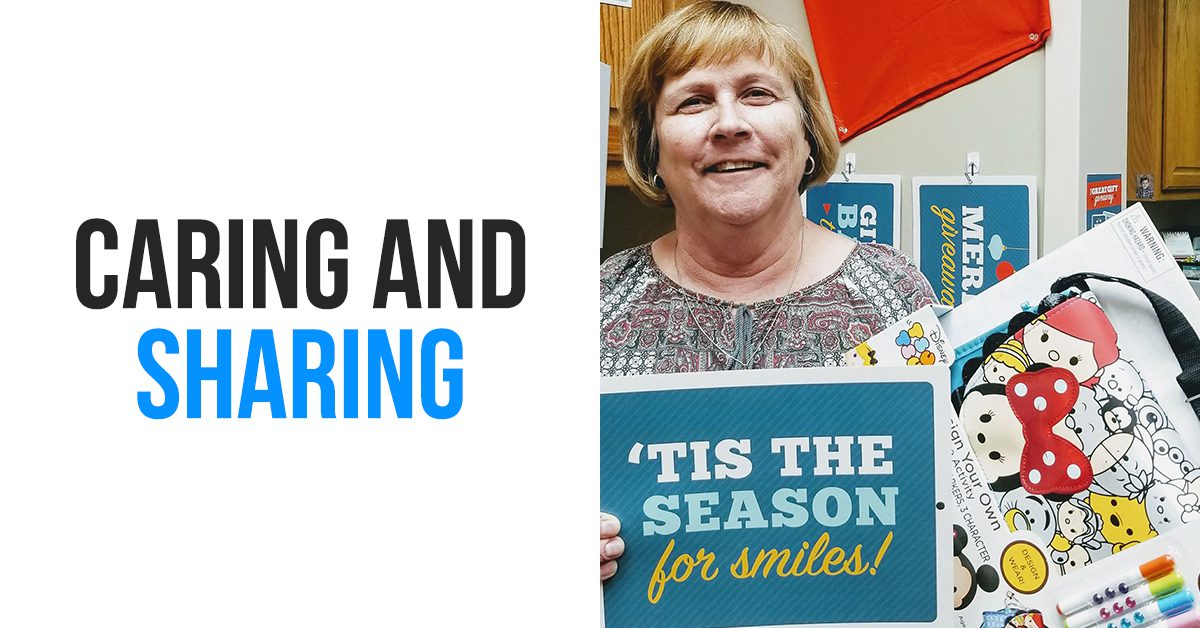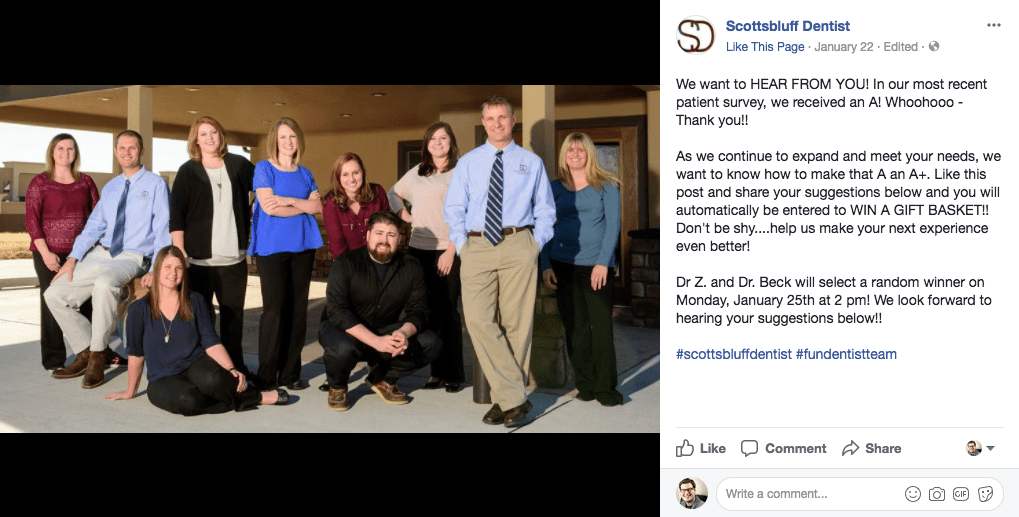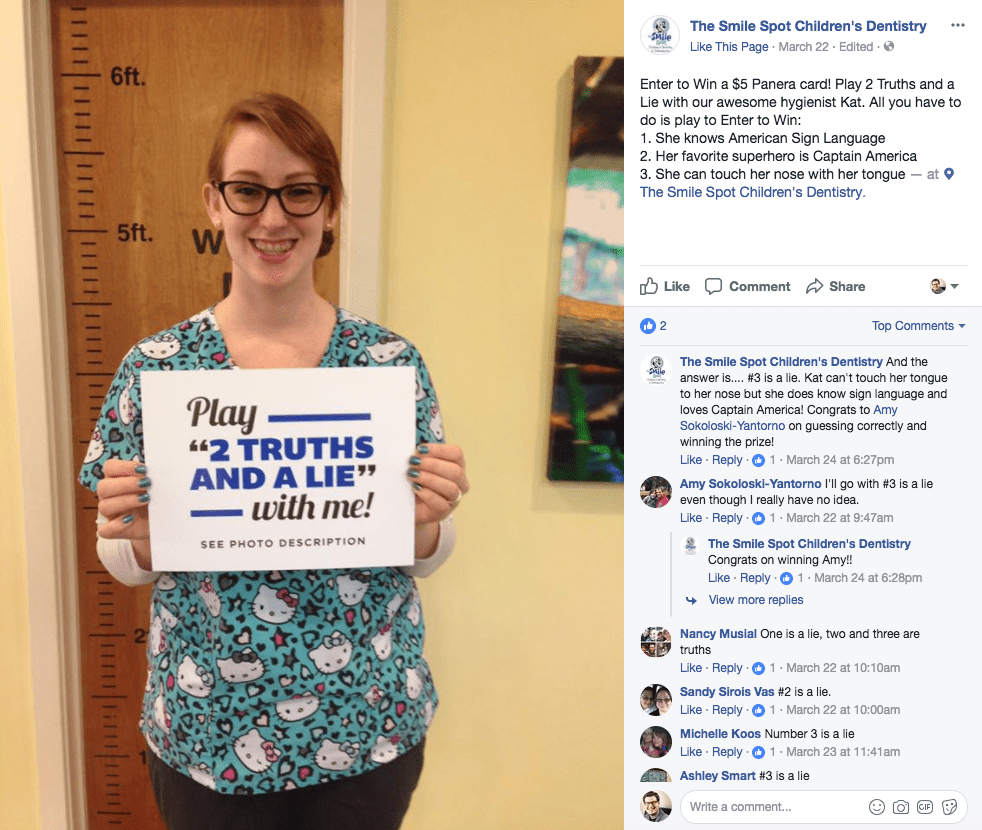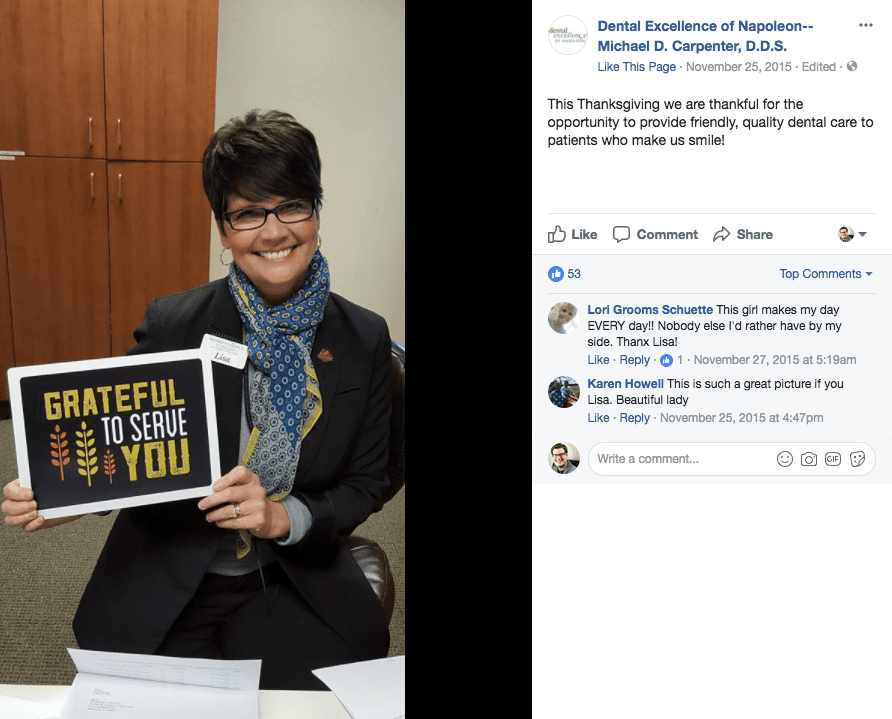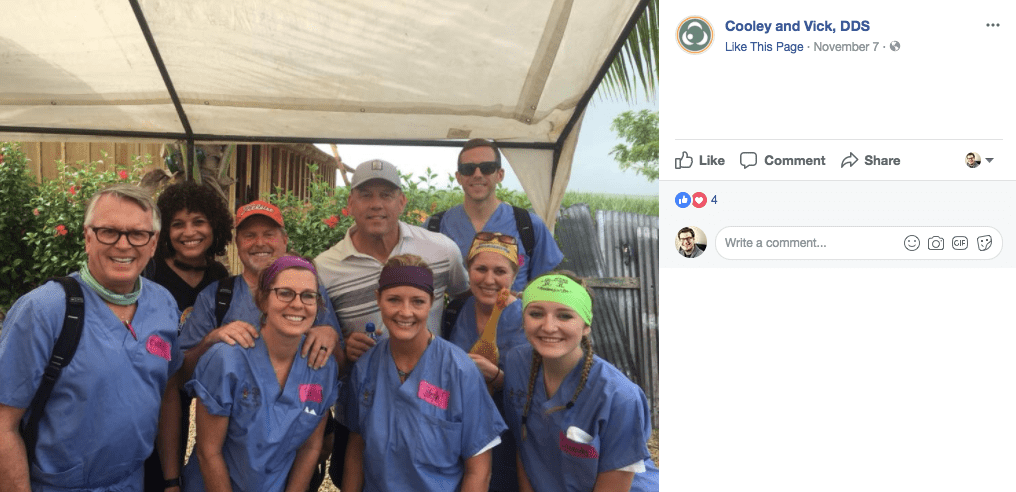
Congratulations to our November Practice of the Month — Hulsey Dentistry!
There are two important things we’ve observed about the Hulsey Dentistry team as they have grown their practice’s social media presence: they post consistently and they know the value of having fun. Despite all the complicated design and optimization that goes into social media strategy, the keys to building relationships and promoting your dental practice online are simple to understand. Be present, make people smile and help them get to know your team personally.
Whether they’re having a fun prize giveaway, celebrating a team member’s birthday, or highlighting a Patient of the Day, the Hulsey Dentistry team shows through social media that their office is a place where patients can smile, relax, and receive top-notch care. In turn, patients share that content with family and friends, bringing more new patients to the practice!
We reached out to Hulsey Dentistry’s patient care coordinator, Jennifer Sexton, for some insight into what has been most effective in their social media efforts. Take an idea to try in your own office!
Q&A With Patient Care Coordinator Jennifer Sexton
(Responses edited for length and clarity.)
Since you started using social media in your practice, what has been the biggest surprise? The one thing you weren’t expecting?
“We are constantly surprised at how much our patients and friends truly enjoy seeing what goes on at our office. The positive responses we receive when we post photos of ourselves doing everyday office activities are awesome. Dentistry tends to make people nervous so getting to see us having fun and enjoying our job makes patients more relaxed and comfortable.”
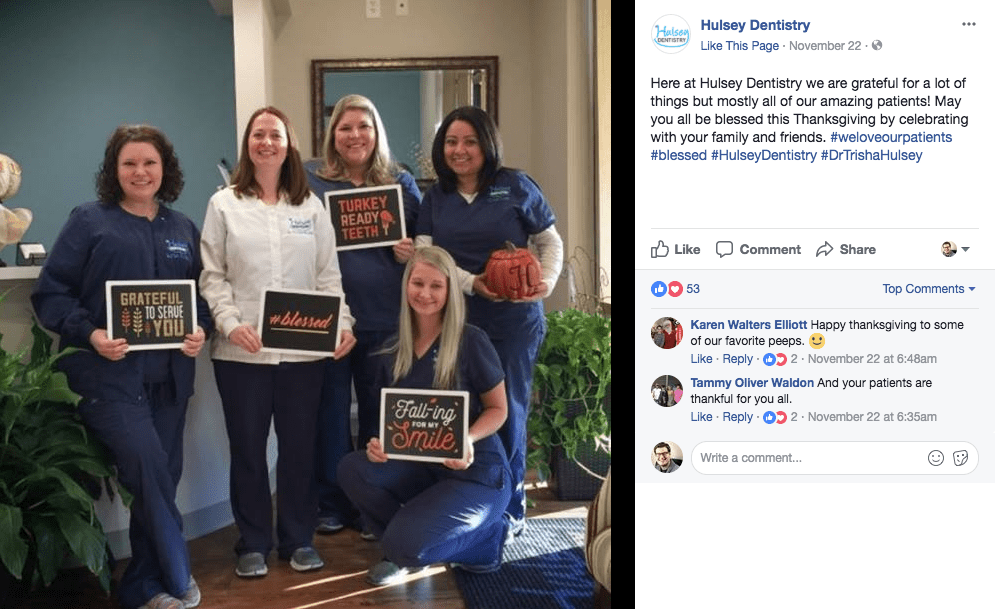
Which social media tools have you seen the most success with?
“Our posts that use Snapchat filters and voice changing apps are definitely the most popular. Our patients frequently tell us that our Facebook posts consistently make them smile. At first we were nervous that what we were posting would be interpreted as silly, but then we started receiving such positive patient interaction. Our patients enjoy having fun just as much as we do!”
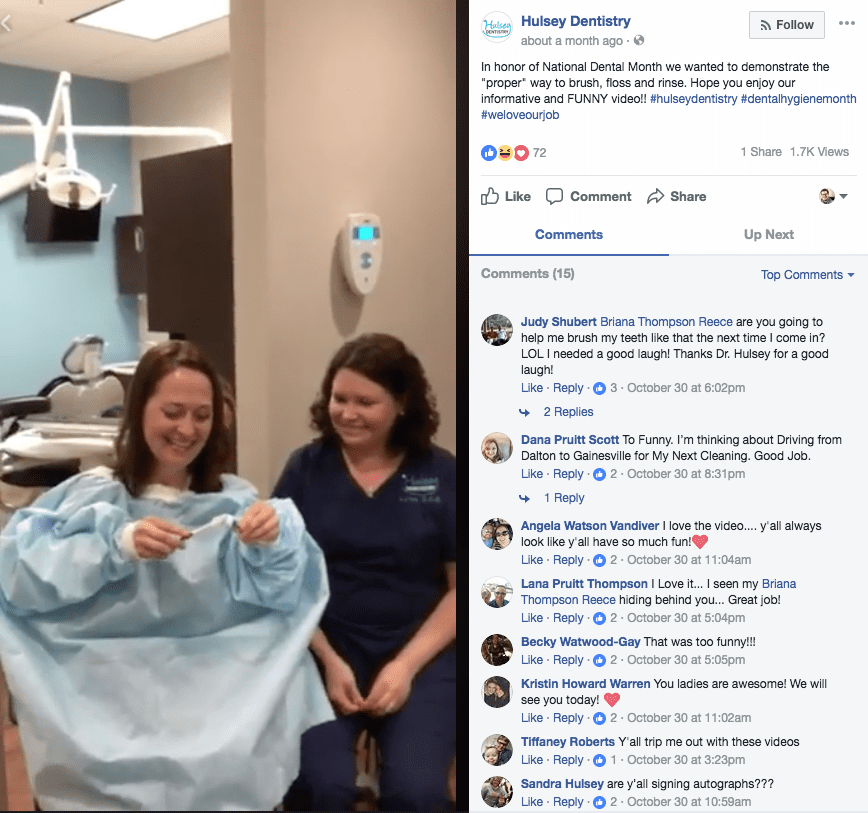
What are the most significant ways social media marketing has benefited your practice?
“When our current patients share our posts and videos we see a boost in the scheduling of new patient appointments. Because we try to share our heart in all of our posts, non-patients are able to see our office personality and gain insight into what to expect when they come in to see us.
Our patients tell us that they love our goofy videos and personal photos of our family or special occasions at the office. They also get really excited when we announce a new social media giveaway!”
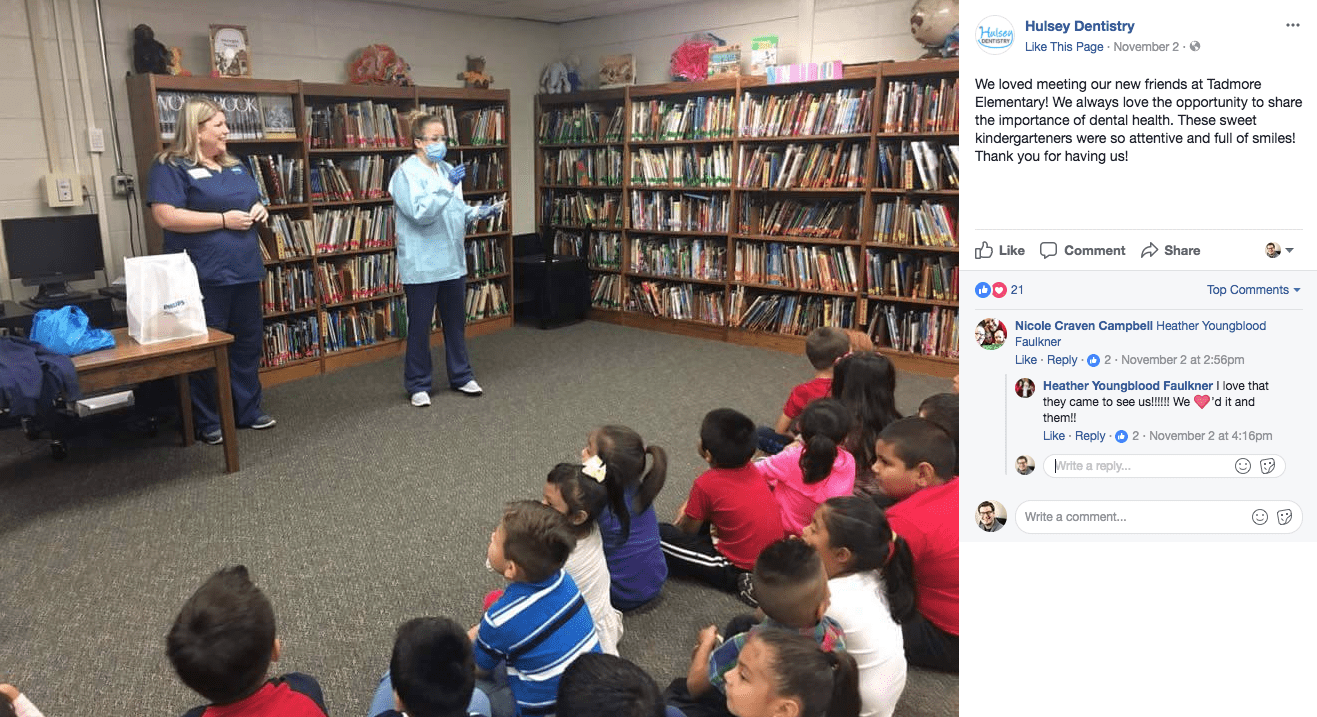
What has been the biggest challenge you’ve faced in building your practice’s social media presence?
“Being intentional about making videos and taking pictures with our patients can be difficult. It’s easy to get so wrapped up in patient care that we forget to take the time to share special moments in our office. The Social Signs and daily post ideas we get from My Social Practice help keep us consistent!”
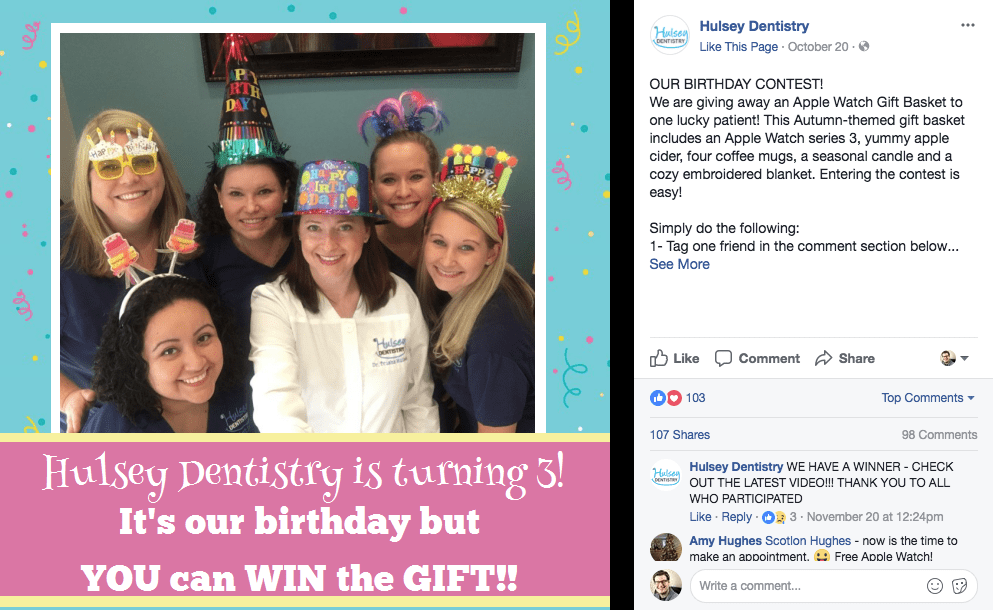
What advice would you give to a practice just starting out with social media marketing?
“Sign up for My Social Practice and simply start posting! Utilize their awesome content but never underestimate the power of a simple photo with a happy patient.
To help you do that, you could start ‘Take-a-picture-Tuesday,’ like we do at our office. It’s a scheduled event every Tuesday for our entire team to share a fun photo or video on our Facebook page. While we strive to post daily anyway, this single focus streamlines our efforts and allows us to be more creative.”
Thanks for sharing, Jennifer! We look forward to watching your practice and social media presence continue to grow!
It’s true that it can be difficult to find the time to post something daily. Our Social Media Publisher makes it easy! My Social Practice clients have access to the world’s largest library of dental-related social media content, with images and pre-written captions you can customize to fit your audience. Plus, you can schedule posts in advance to go out to your accounts when you choose! Get a free demo of the Publisher today!

The post Our November Practice of the Month — Hulsey Dentistry! appeared first on My Social Practice - Social Media Marketing For Dentists, Orthodontists, & Optometrists.


